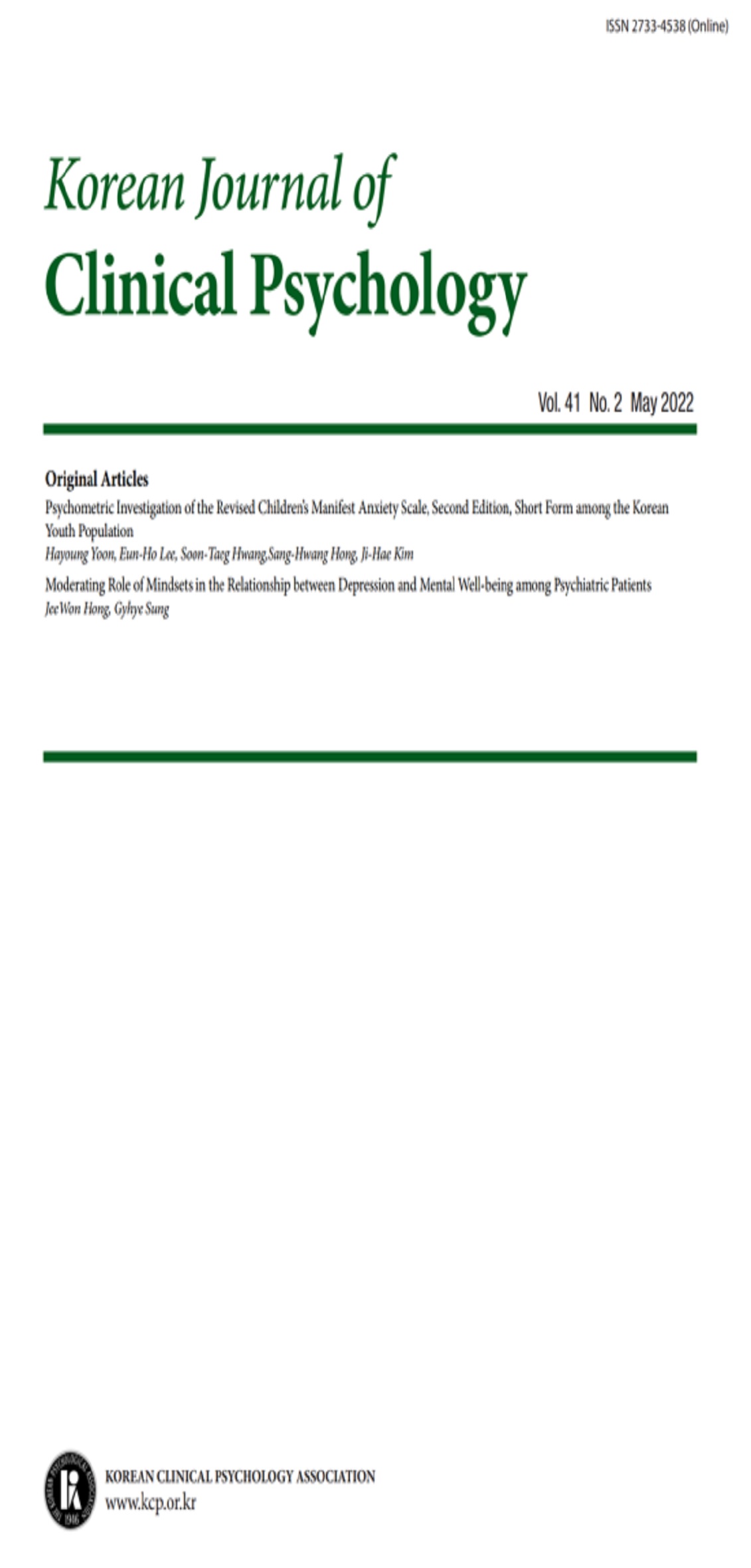open access
메뉴
open access
메뉴 E-ISSN : 2733-4538
E-ISSN : 2733-4538
The purpose of this study was to examine the relationships between depression and cognitive functions in vascular dementia, and to find out the lesion sites in the brain that increase the risk of depression. Comprehensive cognitive functions were assessed by the Seoul Neuropsychological Screening Battery and several executive function tests. Depression was assessed using the Geriatric Depression Scale, the Cornell Scale for Depression in Dementia, and the DSM-IV criteria. The subjects were 35 patients of vascular dementia in the early stage (CDR 0.5~1) and 35 normal elderly. There was no significant difference in the demographic variables. The results showed that the vascular dementia group had significantly higher depressive levels than the normal elderly, and that depression was negatively correlated with frontal/executive function, attention, psychomotor speed, and verbal memory. The hierarchical multiple regression analyses showed that depression significantly predicted the phonemic fluency. This result suggests that there is a close connection between the left frontal lobe and depression. Based on this result, the vascular dementia patients were divided into two subgroups, the left frontal group that had lesions in the left frontal lobe and the others that had lesions in other areas besides the left frontal lobe. It was found that only the left frontal group had higher depressive levels than the normal elderly. The logistic regression analysis showed that the left frontal group had an odds ratio of 6.44 for the increased risk of developing depression compared with the normal elderly.
(2003) 서울신경심리검사 Professional manual , 휴브알엔씨
(1999) Comparison of two screening tests in dementia: The Mini-Mental State Examination (MMSE) and the Revised Hasegawa's Dementia Scale (HDS-R).,
(1997) 치매 환자들을 대상으로 한 K-MMSE의 타당도 연구,
(1999) 도시지역 노인들의 치매유병률에 관한 단면조사 연구,
(2004) 치매에서의 우울증,
(1994) 뇌졸중 후의 우울증 유병률과 경과 및 뇌손상 부의와의 관련성에 관한 문헌 개관,
(1997) 한국의 한 농촌 지역에 거주하는 노인에서의 치매의 유병률,
(2003) The role of cerebrovascular disease in dementia,
(1997) 노인 우울 척도의 신뢰도 타당도 연구,
(2001) 한국판 Expanded Clinical Dementia Rating (CDR) 척도의 타당도,
(1988) Cornell Scale for Depression in Dementia,
(1997) Clinically defined vascular depression,
(1994) Diagnostic and statistical manual of mental disorders,
(1992) Cognitive function in major depression Journal of Affective Disorders,
(2000) Anxiety, Depression and psychosis in vascular dementia Journal of Affective Disorders,
(1989) Lateralization of dementia of depression in stroke patients American Journal of Psychiatry,
(1991) A cognitive battery for dementia Journal of Consulting and Clinical Psychology,
(1990) Self-rating and objective memory testing of normal and depressed elderly,
(2004) Distinctive cognitive profiles in Alzheimer's disease and subcortical vascular dementia ,
(2004) Emotion, Houghton Mifflin Company
(1991) Left frontal hypoactivation in depression Journal of Abnormal Psychology,
(1995) Poststroke depression: Is there a pathoanatomic correlate for depression in the postacute stage of stroke? ,
(1995) Long-term prognosis of poststroke aphasia studied with Positron Emission Tomography ,
(2000) Poststroke depression and emotional incontinence: Correlation with lesion location,
(2002) The complex nosological concept of vascular dementia,
(2001) Depressive symptoms among cognitively normal versus cognitively impaired elderly subjects ,
(1996) Vascular dementia: Still a debatable entity? ,
(1999) Differentiation of vascular dementia from AD on Neuropsychological tests,
(1996) Neuropsychological aspects of vascular dementia,
(1999) The prevalence of depression in Alzheimer's disease and vascular dementia in a population sample,
(2000) Depression and lesion location in stroke, Cambridge University Press
(2002) Vascular cognitive impairment and vascular dementia,
(2002) Subcortical ischemic vascular dementia,
(1993) Diagnostic criteria for research studies,
(1997) The psychological construct of word fluency,
(1998) Frequency and clinical determinants of post-stroke depression,
(2002) Metholology of studying affective disorders in cerebrovascular disease, Martin Dunitz.
(1999) Neurological correlates of depressive symptoms in Alzheimer's disease and vascular dementia ,
(1991) Depression after stroke The importance of cerebral hemisphere asymmetries The Journal of Neuropsychiatry and Clinical Neurosciences,
(1997) A preliminary profile of neuropsychological deficits associated with major depression ,
(2000) PET measurements of brain glucose metabolism and blood flow in major depressive disorder:A critical review,
(1983) Development and validation of geriatric depression screening scale Journal of Psychiatry Research,
(1983) Development and validation of geriatric depression screening scale Journal of Psychiatry Research,
